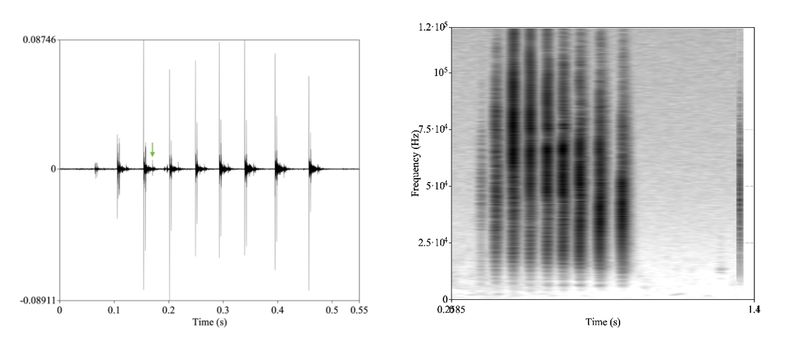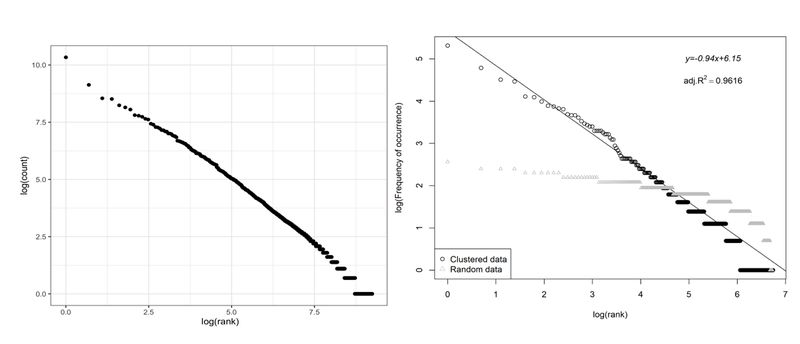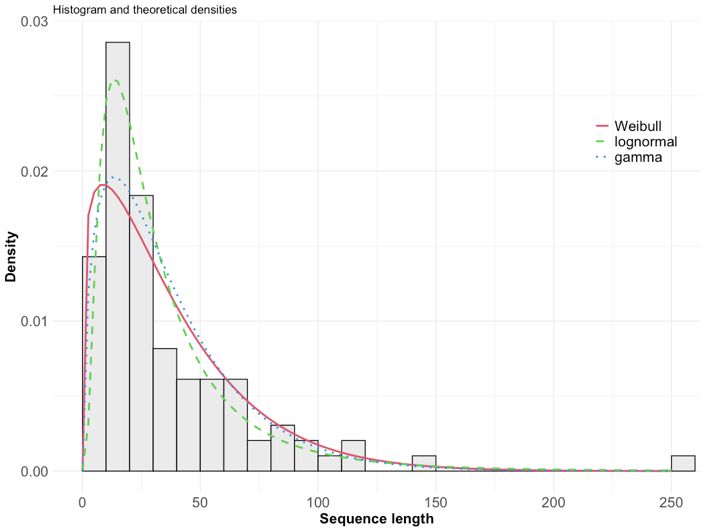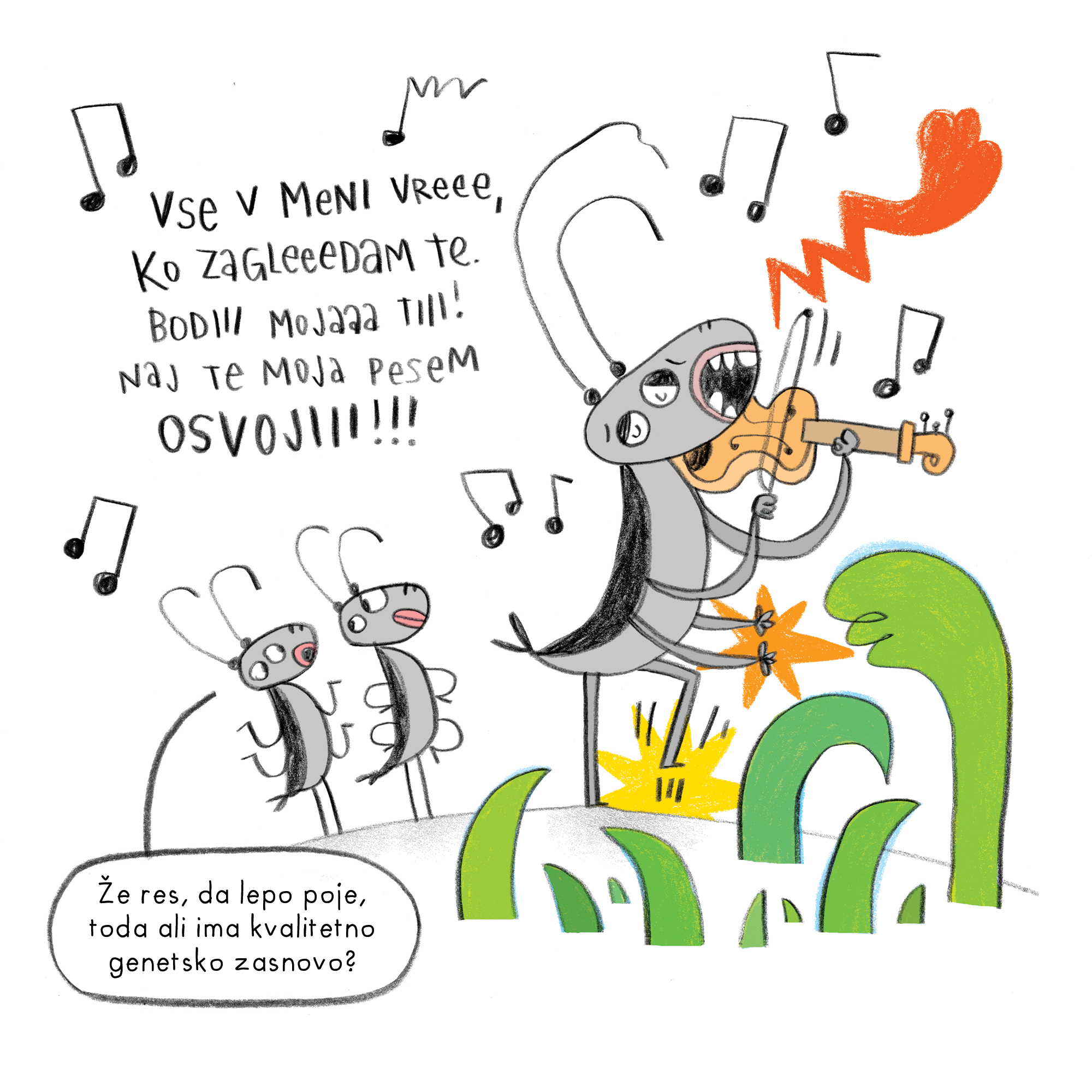Cetaceans, and in particular most varieties of dolphins, live and function in highly organised social groups. As they spend most of their time in a murky and often low-visibility underwater environment, dolphins rely on acoustic vocalisations for purposes of (self)identification, orientation, pursuing pray, and maintaining contact between family members such as mothers and their young. Dolphins are commonly believed to employ some kind of communication system in order to maintain group coherency and support coordinated activities, but the answer to the question of how advanced or developed such a system might be remains elusive.
Dolphins' vocalisations include whistles, clicks, and bursts or burst-pulsed sounds. Dolphins use these types of sounds interchangeably and even produce more than one type at the same time, for instance whistles and clicks. Both whistles and burst sounds have tonal properties and are produced in a frequency range accessible to human hearing. Clicks are typically produced as separate pulses, but also in sequences in a broadband frequency range far beyond the hearing and sound producing capacities of humans (Figure 1). Cetaceans also use clicks for echolocation – the beamed narrow-directional click energy reflects off the target objects and returns to the dolphin in modulated form – and the animal is then able to infer various information about the object’s location and shape based on these signal modulations.

Figure 1: Comparison of frequency ranges pertaining to human and dolphin hearing and sound production
The number of studies dealing with the communicative properties of cetacean acoustic vocalisations has increased in recent years (see e.g. Janik 2009 for a review), with the majority of these studies focusing on whistles and bursts, not least because those two vocalisation types are readily accessible to direct human perception and observation. Investigations of the communicative properties of clicks, in contrast, require more sophisticated instruments that are capable of registering a wider frequency range. Recent technological advances have led to a new generation of sensitive hydrophones (underwater microphones), which enable more robust and accurate recording of dolphin signals and thus provide high-quality data for such investigations.
Researchers at the Centre of the Cognitive Science of Language in the University of Nova Gorica, together with collaborators from the Technical University of Varna in Bulgaria, have analysed a set of click data collected from five Caribbean bottlenose dolphins (Tursiops truncatus) living in captivity in the Varna dolphinarium. We specifically analysed the following data: frequencies, amplitudes, and durations of the clicks. Overall, we identified 3,618 clicks organized in 98 sequences at the segmentation stage. The amplitudes and frequencies of a sample click sequence are illustrated in Figure 2. Individual clicks in our database were produced in a broadband frequency range of up to 125 kHz (Figure 1).

Figure 2: A typical sequence of nine clicks shown by amplitude (left) and frequency distribution (right). The pulses in the sequence manifest a broadly similar structure.
How can it be determined if a seemingly rich and diverse repertoire of acoustic vocalisations qualifies as a communication system used for exchanging messages among conspecifics? Many approaches to this question have been pursued by animal communication researchers. One reasonable approach is to verify if the set of signals of interest meets the criterion of "efficient communication". This idea goes back to the influential work of the American linguist George Kingsley Zipf (1949) who formulated a number of linguistic laws or regularities that an efficient communication system, such as the human language, satisfies. These include what came to be known as Zipf's frequency law, the law of abbreviation, and Menzerath-Altmann's law (see, e.g. Semple et al. 2022 for a review of different forms of Zipfian regularities across various linguistic and biological domains). In our analysis of amplitude and durations of clicks and click sequences, we looked for patterns that would indicate a coherent system from the perspective of efficient communication criterion.
Zipf's frequency law, perhaps the most widely known of the three laws, can be observed when a list of word frequencies in a large enough text is ranked in decreasing order. The empirical law states that the frequency of each word in the text is roughly inversely proportional to its rank. For instance, the second most frequent word in a text has a frequency twice as low as the first most frequent one, the third most frequent word has a frequency three times lower than the first one, and so on. If rank is plotted against frequency on a logarithmic scale, this inverse correlation shows up as a descending (almost) straight line (see Figure 3). Zipf's frequency law is often thought to be the result of two different tendencies in speakers use of words to convey messages: one for using a single linguistic expression to express all messages, or ultimate repetition, and another one for having a different linguistic expression for each possible message, or no repetition at all. While the former tendency places the greatest burden on the listener, the latter places the greatest burden on the speaker. In the realm of human communication, both speakers and listeners strive to minimize their respective efforts ("the least effort" criterion), which ultimately leads to some sort of equilibrium between the two tendencies.
In the 1990s, Brenda McCowan and coworkers used the mathematical technique of cluster analysis (i.e. groupings of a set of objects) to categorise whistles produced by adult and infant bottlenose dolphins into discreet (that is, separate and non-overlapping) categories by their frequency distribution. The researchers found that this distribution manifested a linear dependency the parameters of which approximated those observed in human language texts. This suggests that dolphins' use of whistles is broadly in line with the predictions of the "least effort" principle of efficient communication. It is therefore reasonable to hypothesise that similar properties also apply to dolphin click signals.
Using an advanced clustering approach, we categorised clicks in our database, this time using amplitude values rather than frequencies. The clustering algorithm converged on 848 different clusters, or click categories. The size of the resulting clusters varied between one and 120 click tokens. As in the previous research on whistles, we considered category size to be a good approximation of the frequency of occurrence of specific clicks per cluster. By ordering the obtained category sizes by their respective ranks, we obtained an inverse correlation the parameters of which again approximated those in human language texts. This indicates that the distribution of clicks in our tested dolphins' repertoire approximates the distribution of words in human language samples in accordance with Zipf's law. By way of comparison, we also generated a matrix of (pseudo-)random numerical values within the range of the actual amplitudes of the clicks in our database and ran the same categorising algorithm on this set as well (see Figure 3, right).

Figure 3: On the left, a frequency-rank dependency among words used in the English translation of Vladimir Bartol's novel Alamut and conforming to Zipf's law. On the right, regression of rank versus frequency of occurrence of dolphins' clicks (circles) and pseudo-random generated data (triangles). A log-log scale is used in both cases.
We then proceeded to test whether the clicks from our database conformed to the law of abbreviation, according to which more frequent linguistic units, e.g., sentences, tend to be shorter and less frequent ones tend to be longer. The "least effort" principle of efficient communication defined above favours the speaker's choice of smaller sentence lengths under otherwise equal conditions (e.g., the same meaning). In our investigation, we looked at the lengths of the dolphin click sequences in our database, measured by the number of clicks. Their distribution is shown in the probability density plot in Figure 4, and demonstrates the trend of decreased length of click sequences with the increased number of clicks per sequence (described statistically by a family of generalised gamma distributions). This suggests that dolphins use shorter click sequences more frequently, and longer once less frequently, similar to what we find in human language samples.

Figure 4: Distribution density of sequence lengths calculated by the number of pulses in the analysed corpus with the fit curves.
Finally, we tested whether dolphins' click sequences conform to Menzerath-Altmann's law according to which the longer a linguistic expression, the shorter its constituent parts, and vice versa. This law can also be seen as expressing a tendency for compression or minimisation of the linguistic code without loss of information. We statistically modelled the relationship between individual click durations and the length of sequences that contained these clicks in our database. We found that sequence length had a statistically significant and negative effect on the individual click duration. Specifically, increasing a sequence length by one click leads to a decrease in the duration of individual clicks by about 0.4 milliseconds. This is broadly in line with Menzerath-Altmann's law.
Our exploratory results suggest that the repertoire of broadband click sounds produced by dolphins conforms to the three linguistic laws of efficient communication. If this line of analysis is correct, it confirms the complex structure of dolphins' click utterances, which also implies the existence of smaller, or simpler units arranged into larger, or more complex ones. This would be in line with at least one of the properties of the (human) language identified by the American linguist Charles Hockett some sixty years ago and known as "duality of patterning" whereby meaningless units (e.g. phonemes in human languages) are combined together to produce meaning-bearing conglomerates such as morphemes, words, and sentences. We do not yet know if it makes sense to view, for example, individual clicks as (meaningless) building blocks of complex messages, although this might be the case. In particular, there is a possible interpretation that the amplitudes and durations of clicks may be carrying, if not all, then at least a sufficient amount of linguistic signal. To unpack this idea, first note that clicks as communicative signals are not unique to dolphins in particular or cetaceans in general. Humans use them as well (for example, to express displeasure or disappointment). Furthermore, some languages even have click consonants in their phonetic repertoire (Sands 2020). Now, as a kind of thought experiment, suppose that by some strange and unlikely accident we humans lose all of our capacity for producing linguistic sounds (consonants and vowels) with the exception of clicks. In such a situation, a click itself would lose its linguistic (more precisely, phonemic) significance, and, as a result, the amplitudes and durations of clicks could become a vehicle for encoding various kinds of information conveyed during communication. Given the anatomical specificities of the sound producing capacity of cetaceans, the amplitude modulation and duration of clicks that encode a linguistic signal might be nature's solution that provides the necessary richness of repertoire and creates the building blocks of the dolphins' communication system.














